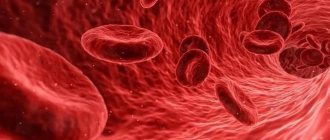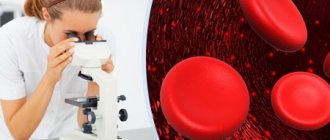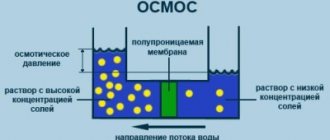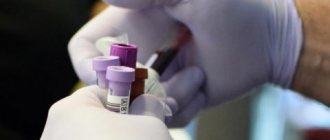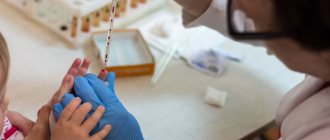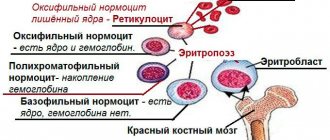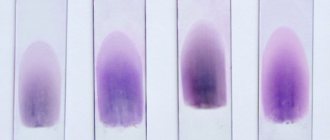It is no coincidence that physiologists call blood the internal environment of the body. It interacts with all organs and performs many vital functions. Sometimes these functions are impaired in cancer patients. The reasons are different: a malignant tumor itself, side effects of drugs, serious surgical interventions, bleeding, severe concomitant diseases, lesions of the red bone marrow. If the problem cannot be solved with medications, the patient is indicated for a transfusion of blood components.
Blood has a complex composition. Its liquid part, plasma, is a “cocktail” of electrolytes, albumin, glucose, enzymes, antibodies, coagulation factors and other substances. Blood cells (formed elements) float in this solution: red blood cells deliver oxygen to tissues and carry away carbon dioxide, white blood cells provide protection for the body, platelets help stop bleeding.
Most often, the patient does not need all these components at once. For example, in case of immunodeficiency only leukocytes are required, in case of anemia - erythrocytes. Therefore, whole blood is rarely transfused nowadays. Typically, its use is a last resort when the patient has both a reduced blood volume and red blood cell count, and plasma substitutes and blood components are not available.
- Red blood cells (packed red blood cells)
- Platelets (platelet mass, platelet concentrate)
- Leukocytes (leukocyte mass)
- Fresh frozen plasma
- Cryoprecipitate
Plasma composition and functions of its elements
Most of the plasma is water, its amount is approximately 92% of the total volume. In addition to water, it includes the following substances:
- proteins;
- glucose;
- amino acids;
- fat and fat-like substances;
- hormones;
- enzymes;
- minerals (chlorine, sodium ions).
About 8% of the volume is proteins, which are the main part of plasma. It contains several types of proteins, the main ones being:
- albumins – 4-5%;
- globulins – about 3%;
- fibrinogen (belongs to globulins) – about 0.4%.
Artificial blood substitutes
A great achievement in medicine is the discovery and use of artificial blood substitutes, i.e., liquids, the administration of which can in some cases replace a blood transfusion, and in others temporarily delay it. Of course, blood cannot be completely replaced by either plasma or any of the blood-substituting solutions, because they do not contain oxygen carriers - red blood cells.
However, the use of certain blood substitutes can bring a sick or wounded person out of a severe state of shock, even with large blood loss. This eliminates the immediate threat to his life. Blood transfusion, if still required, may then be postponed.
Albumen
Albumin is the main plasma protein. It has a low molecular weight. Content in plasma is more than 50% of all proteins. Albumin is formed in the liver.
Protein functions:
- perform a transport function - transport fatty acids, hormones, ions, bilirubin, medications;
- take part in metabolism;
- regulate oncotic pressure;
- participate in protein synthesis;
- reserve amino acids;
- deliver medications.
A change in the level of this protein in plasma is an additional diagnostic sign. The condition of the liver is determined by the concentration of albumin, since many chronic diseases of this organ are characterized by its decrease.
Modern market of plasma technologies
The main difference between serious professional plasma devices and portable devices for home and salon use is the presence of control over the depth and degree of skin damage. This is an extremely important aspect that allows you to obtain a predictable result and reduce the risks of unwanted side effects.
The number of new devices using plasma capabilities is increasing every year. There are even portable devices that allow you to use plasma energy in salons and at home. However, it should be noted that they set exposure modes in which it is not possible to change either the strength, depth, or treatment time, which raises questions regarding their effectiveness and safety.
At the same time, developers of professional devices, on the contrary, focus their efforts on improving devices and creating more controlled technologies that allow them to obtain the expected and stable results. For example, Neogen PSR (Energist, UK) is the direct “successor” of Portrait PSR, which has improved pulse delivery technologies.
Devices are appearing that incorporate the latest scientific advances in the use of plasma. Among them, it is worth highlighting the Plasma BT device (Seoulin Medicare, Korea), which is already presented on the Russian market. This is a new generation device that uses not only the already well-known thermal effects of plasma exposure, but also the recently discovered properties of cold plasma.
Plasma BT is equipped with two separate nozzles that generate plasma with different characteristics and therefore different effects on the skin ( Fig. 8 ).
Rice. 8. Plasma BT device
- Plasma Surgical - for thermal effects leading to tissue sublimation. The nozzle allows you to deliver plasma in the form of single pulses or a series of pulses of different frequencies, as well as a continuous flow ( Fig. 9 ).
Rice. 9. Damage generated by different modes of the Plasma Surgical Plasma BT handpiece
Moreover, for each mode it is possible to change the energy, and therefore the depth and area of influence.
A patented design of Plasma BT is the presence of a special guide clamp that controls the distance between the plasma-emitting needle and the skin ( Fig. 10 ).
Rice. 10. Plasma Surgical Plasma BT nozzle with a needle-shaped tip and a needle in a special clamp
This allows treatment to be carried out from an optimal distance (0.5 mm) and the formation of homogeneous lesions over the entire surface of the skin. Is used for:
- skin tightening (including for the so-called non-surgical blepharoplasty) ( Fig. 11 ) [16];
Rice. 11. Patient, 42 years old, before (left) and 3 weeks after blepharoplasty using the Plasma BT device (pulse mode, 40 Hz, level 2). Reducing the size of the skin fold opened the upper eyelid by 25% in the right eye and 46% in the left eye, resulting in a 14% widening of the palpebral fissure in both eyes. There were no serious side effects, the swelling resolved after 2 days, and small scabs at the points of injury fell off after 3 days [according to the doctor]
- eliminating wrinkles;
- removal of pigment spots;
- eliminating scars;
- removal of formations on the skin.
- Plasma Poration (plasma shower) - generates cold plasma, which has antibacterial and anti-inflammatory properties, and also stimulates the renewal of skin cells and extracellular matrix components. In addition, a separate area of application is to increase the transdermal delivery of active ingredients to the skin without damaging it ( Fig. 12 ).
Rice. 12. Increasing the permeability of the skin barrier using a plasma shower
Is used for:
- skin rejuvenation;
- acne treatment;
- improving the penetration of various active substances into the skin.
An illustrative example of the effectiveness of using a plasma shower for transdermal delivery of active substances is given in the article by Dr. Beatriz Molina, medical director and owner of Medlkas clinics (UK), leading specialist at Galderma UK [17]. She describes a case of poor circulation during non-surgical rhinoplasty after the injection of hyaluronic acid filler into the tip of the nose.
Because hyaluronidase injections were quite painful for the patient, Dr. Molina used a Plasma Poration tip—3 minutes of nasal treatment followed by topical application of 1,200 and 750 U of hyaluronidase for the first two days after symptom onset, respectively.
Following this, she used a nozzle for transdermal administration of an injectable form of hyaluronic acid for biorevitalization (3 procedures). All adverse events resolved without any complications, which confirms the effectiveness of using a plasma shower for delivering large molecules to the skin ( Fig. 13 ).
Rice. 13. Successful experience of using the Plasma Poration attachment for transdermal administration of hyaluronidase and hyaluronic acid for biorevitalization
Globulins
The remaining plasma proteins are classified as globulins, which are large in molecular weight. They are produced in the liver and in the organs of the immune system. Main types:
- alpha globulins,
- beta globulins,
- gamma globulins.
Alpha globulins bind bilirubin and thyroxine, activate the production of proteins, transport hormones, lipids, vitamins, and microelements.
Beta globulins bind cholesterol, iron, vitamins, transport steroid hormones, phospholipids, sterols, zinc and iron cations.
Gamma globulins bind histamine and participate in immunological reactions, which is why they are called antibodies, or immunoglobulins. There are five classes of immunoglobulins: IgG, IgM, IgA, IgD, IgE. Produced in the spleen, liver, lymph nodes, and bone marrow. They differ from each other in biological properties and structure. They have different abilities to bind antigens, activate immune proteins, have different avidity (rate of binding to antigen and strength) and ability to pass through the placenta. Approximately 80% of all immunoglobulins are IgG, which have high avidity and are the only ones that can cross the placenta. IgM is synthesized first in the fetus. They are also the first to appear in the blood serum after most vaccinations. They have high avidity.
Blood composition
Fibrinogen is a soluble protein that is produced in the liver. Under the influence of thrombin, it is converted into insoluble fibrin, due to which a blood clot is formed at the site of vessel damage.
Cryoprecipitate
What it is? Cryoprecipitate is the name given to cryoglobulin proteins that precipitate and form a gel when fresh frozen donor plasma thaws in a certain manner. Cryoprecipitate can be frozen, in the form of a yellow mass, and dried, in the form of a powder for dissolution in water.
In what cases is it used? The drug contains blood clotting factors. It is used for hemophilia, disseminated intravascular coagulation and some other pathologies.
Euroonko cooperates with one of the largest donor blood banks in Russia. We conduct blood transfusions on the basis of a license for “transfusiology in outpatient and inpatient settings”, which was issued to our clinic by the Moscow Department of Health. We have everything necessary to perform transfusion as quickly as possible, in compliance with modern standards and recommendations.
Book a consultation 24 hours a day
+7+7+78
Bibliography:
- Sanjeev Sharma MD; Poonam Sharma, MD; and Lisa N. Tyler, MD, Creighton University School of Medicine, Omaha, Nebraska. Transfusion of Blood and Blood Products: Indications and Complications. Am Fam Physician. 2011 Mar 15;83(6):719-724.
- Joint United Kingdom (UK) Blood Transfusion and Tissue Transplantation Services Professional Advisory Committee. 3.3: Blood products.
- All-Russian public organization "Russian Association of Transfusiologists". Donor blood and its components: characteristics and quality control. II. Red blood cells (packed red blood cells). Organization Standard No. 2, date of adoption 04/01/2005.
- All-Russian public organization "Russian Association of Transfusiologists". Donor blood and its components: characteristics and quality control. III. Red blood cells with the buffy platelet layer removed. Organization Standard No. 3, date of adoption 04/01/2005.
- All-Russian public organization "Russian Association of Transfusiologists". Donor blood and its components: characteristics and quality control. IV. Erythrocyte suspension. Organization Standard No. 4, date of adoption 04/01/2005.
- All-Russian public organization "Russian Association of Transfusiologists". Donor blood and its components: characteristics and quality control. V. Erythrocyte suspension with the buffy platelet layer removed. Organization Standard No. 5, date of adoption 04/01/2005.
- All-Russian public organization "Russian Association of Transfusiologists". Donor blood and its components: characteristics and quality control. VII. Red blood cells depleted of leukocytes. Organization Standard No. 7, date of adoption 04/01/2005.
- All-Russian public organization “Russian Association of Transfusiologists”. Donor blood and its components: characteristics and quality control. VIII. Cryopreserved red blood cells. Organization Standard No. 8, date of adoption 04/01/2005.
- All-Russian public organization "Russian Association of Transfusiologists". Donor blood and its components: characteristics and quality control. IX. Red blood cells obtained by apheresis. Organization Standard No. 9, date of adoption 04/01/2005.
- All-Russian public organization "Russian Association of Transfusiologists". Donor blood and its components: characteristics and quality control. X. Platelets: restored. Organization Standard No. 10, date of adoption 04/01/2005.
- Empendium.com. Platelets recovered from a blood unit (obtained manually).
- All-Russian public organization "Russian Association of Transfusiologists". Donor blood and its components: characteristics and quality control. XI. Platelets obtained by apheresis. Organization Standard No. 11, date of adoption 04/01/2005.
- Empendium.com. Platelets (platelet concentrate) obtained by automatic apheresis.
- Empendium.com. Washed platelets.
- All-Russian public organization "Russian Association of Transfusiologists". Donor blood and its components: characteristics and quality control. XV. Cryopreserved platelets obtained by apheresis. Organization Standard No. 15, date of adoption 04/01/2005.
- All-Russian public organization "Russian Association of Transfusiologists". Donor blood and its components: characteristics and quality control. XVI. Granulocytes obtained by apheresis. Organization Standard No. 16, date of adoption 04/01/2005.
- Ministry of Health of the Republic of Belarus. Transfusion of donor blood and its components. Instructions for use. Republican Blood Transfusion Station, Belarusian Medical Academy of Postgraduate Education, Research Institute of Hematology and Blood Transfusion. Authors: E.L. Svirnovskaya, V.S. Bondarenko, I.V. Brovko, V.N. Gapanovich, V.V. Klimovich, L.A. Smirnova, I.I. Kanus, T.V. Budko.
- MSD Manual. Professional version. Blood products. By Ravindra Sarode, MD, University of Texas Southwestern Medical Center Latest full review/edited November 2021, Ravindra Sarode, MD.
- MSD Handbook. Paroxysmal nocturnal hemoglobinuria (PNH).
- All-Russian public organization "Russian Association of Transfusiologists". Donor blood and its components: characteristics and quality control. XII. Fresh frozen plasma. Organization Standard No. 12, date of adoption 04/01/2005.
- All-Russian public organization "Russian Association of Transfusiologists". Donor blood and its components: characteristics and quality control. XIII. Cryoprecipitate. Organization Standard No. 13, date of adoption 04/01/2005
Non-protein components
In addition, blood plasma includes non-protein substances:
- organic nitrogen-containing: amino acid nitrogen, urea nitrogen, low molecular weight peptides, creatine, creatinine, indican. Bilirubin;
- organic nitrogen-free: carbohydrates, lipids, glucose, lactate, cholesterol, ketones, pyruvic acid, minerals;
- inorganic: sodium, calcium, magnesium, potassium cations, chlorine anions, iodine.
The ions in the plasma regulate the pH balance and maintain the normal state of cells.
References
- Seregina I. F., Lanskaya S. Yu., Okina O. I., Bolshov M. A., Lyapunov S. M., Chugunova O. L., Foktova A. S. Determination of chemical elements in biological fluids and diagnostic substrates children using mass spectrometry with inductively coupled plasma / Journal of Analytical Chemistry, 2010, volume 65, no. 9, p. 986-994.
- Barrett S. Commercial hair analysis: Science or scam. Journal of the American Medical Association. 1985, v.254, p.1041–1045.
- Skalny A.V. Chemical elements in human physiology and ecology. – M.: Publishing house “Onyx 21st century”: Mir, 2004, 216 p.
- Singh N, Gupta VK, Kumar A, Sharma B. Synergistic Effects of Heavy Metals and Pesticides in Living Systems. / Front Chem. 2017;5:70.
- Chen SX, Wiseman CL, Chakravartty D, Cole DC. Metal Concentrations in Newcomer Women and Environmental Exposures: A Scoping Review. / Int J Environ Res Public Health. 2021. 8;14(3)
Plasma functions
Blood plasma performs many functions, including:
- transportation of blood cells, nutrients, metabolic products;
- binding of liquid media located outside the circulatory system;
- making contact with body tissues through extravascular fluids, thereby achieving hemostasis.
Donor plasma saves many lives
What are the positive effects on the body?
- Plasmapheresis reduces the amount of harmful substances circulating in the plasma;
- Cleanses the blood and all tissues of the body;
- Improves blood supply to all organs and systems by purifying the blood and removing cholesterol plaques;
- Activates brain function;
- The work of the heart is normalized, which stops attacks of angina pectoris;
- Improves the functioning of the liver and kidneys, resulting in the timely removal of toxins and harmful substances from the body;
- Strengthens the immune system;
- Improves skin structure;
- Promotes weight loss.
Use of donor plasma
In our time, transfusions often require not whole blood, but its components and plasma. Therefore, blood transfusion centers often donate blood for plasma. It is obtained from whole blood by centrifugation, that is, the liquid part is separated from the formed elements using a machine, after which the blood cells are returned to the donor. The procedure lasts about 40 minutes. The difference from donating whole blood is that blood loss is much less, and you can donate plasma again after two weeks, but no more than 12 times during the year.
Blood serum is obtained from plasma, which is used for medicinal purposes. It differs from plasma in that it does not contain fibrinogen, but contains all the antibodies that can resist pathogens. To obtain it, place sterile blood in a thermostat for an hour. Then the resulting clot is peeled off from the wall of the test tube and kept in the refrigerator for a day. After this, using a Pasteur pipette, the settled whey is poured into a sterile container.
Blood structure
What is blood? This is tissue that consists of plasma and special blood cells contained in it in the form of a suspension. Plasma is a clear, yellowish liquid that makes up more than half of the total blood volume. More information about the composition and functions of plasma can be found here. It contains three main types of shaped elements:
- erythrocytes are red cells that give the blood a red color due to the hemoglobin they contain;
- leukocytes – white cells;
- platelets are blood platelets.
Arterial blood, which comes from the lungs to the heart and then spreads to all organs, is enriched with oxygen and has a bright scarlet color. After the blood gives oxygen to the tissues, it returns through the veins to the heart. Deprived of oxygen, it becomes darker.
About 4 to 5 liters of blood circulate in the circulatory system of an adult. Approximately 55% of the volume is occupied by plasma, the rest is formed elements, with the majority being erythrocytes - more than 90%.
Blood is a viscous substance. Viscosity depends on the amount of proteins and red blood cells contained in it. This quality affects blood pressure and movement speed. The density of blood and the nature of the movement of formed elements determine its fluidity. Blood cells move differently. They can move in groups or alone. Red blood cells can move either individually or in whole “stacks,” just as stacked coins tend to create a flow in the center of the vessel. White cells move singly and usually stay near the walls.
